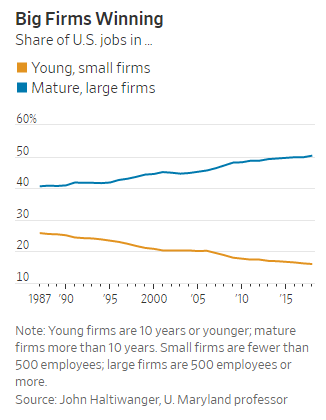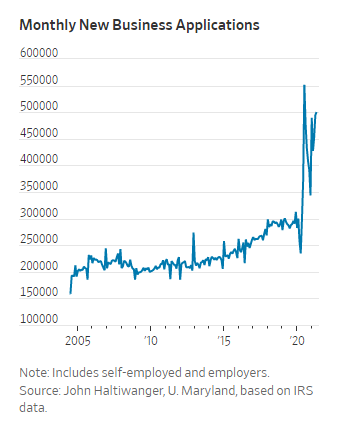Is longevity for firms a noble goal? Or do humans usually flourish more in the churn of creative destruction?
(p. B1) KYOTO, Japan — Naomi Hasegawa’s family sells toasted mochi out of a small, cedar-timbered shop next to a rambling old shrine in Kyoto. The family started the business to provide refreshments to weary travelers coming from across Japan to pray for pandemic relief — in the year 1000.
Now, more than a millennium later, a new disease has devastated the economy in the ancient capital, as its once reliable stream of tourists has evaporated. But Ms. Hasegawa is not concerned about her enterprise’s finances.
Like many businesses in Japan, her family’s shop, Ichiwa, takes the long view — albeit longer than most. By putting tradition and stability over profit and growth, Ichiwa has weathered wars, plagues, natural disasters, and the rise and fall of empires. Through it all, its rice flour cakes have remained the same.
Such enterprises may be less dynamic than those in other countries. But their resilience offers lessons for businesses in places like the United States, where the coronavirus has forced tens of thousands into bankruptcy.
“If you look at the economics textbooks, enterprises are supposed to be maximizing profits, scaling up their size, market share and growth rate. But these companies’ operating principles are completely different,” said Kenji Matsuoka, a professor emeritus of business at Ryukoku University in Kyoto.
(p. B5) “Their No. 1 priority is carrying on,” he added. “Each generation is like a runner in a relay race. What’s important is passing the baton.”
Japan is an old-business superpower. The country is home to more than 33,000 with at least 100 years of history — over 40 percent of the world’s total, according to a study by the Tokyo-based Research Institute of Centennial Management. Over 3,100 have been running for at least two centuries. Around 140 have existed for more than 500 years. And at least 19 claim to have been continuously operating since the first millennium.
. . .
The businesses, known as “shinise,” are a source of both pride and fascination.
. . .
Most of these old businesses are, like Ichiwa, small, family-run enterprises that deal in traditional goods and services. But some are among Japan’s most famous companies, including Nintendo, which got its start making playing cards 131 years ago, and the soy sauce brand Kikkoman, which has been around since 1917.
. . .
The Japanese companies that have endured the longest have often been defined by an aversion to risk — shaped in part by past crises — and an accumulation of large cash reserves.
It is a common trait among Japanese enterprises and part of the reason that the country has so far avoided the high bankruptcy rates of the United States during the pandemic. Even when they “make some profits,” said Tomohiro Ota, an analyst at Goldman Sachs, “they do not increase their capital expenditure.”
Large enterprises in particular keep substantial reserves to ensure that they can continue issuing paychecks and meet their other financial obligations in the event of an economic downturn or a crisis. But even smaller businesses tend to have low debt levels and an average of one to two months of operating expenses on hand, Mr. Ota said.
(Note: the online version of the story was updated Jan. 7, 2021, and has the title “This Japanese Shop Is 1,020 Years Old. It Knows a Bit About Surviving Crises.”)



